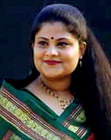
Music
The Call of the Raaga: Classical Music in Hindi Cinema – PART I

As Indians all over the world come together to celebrate 100 years of Indian cinema, we harken back to the non-talkie era when history was created with the very first film made in India – the period piece called “Raja Harishchandra” in 1913 by the great Dadasaheb Phalke. Fortuitously however, the very fabric of Indian culture is rooted in a very rich hoary tradition of omnipresent music, be it the classical, semi-classical, light or folk genres. Therefore, with the advent of talkie-era in cinema, Indian films soared beautifully with mellifluous, memorable melodies and songs. Most important, the influence of classical music in Hindi cinema is momentous and pervasive.
Legend has it that our Indian classical music was passed down by the gods themselves and is as ancient as the hills and rivers. Classical music was and still is all around us, waiting to be discovered by sages, saints and even pure simple aesthetes. Hindustani classical music, which dates as far back as our primordial Hindu spiritual tradition known as “Sanathana Dharma,” is held in a high place of honor in society. Classical music is inseparable from the fabric of life and has influenced all creative spheres including the ubiquitous Hindi cinema industry now popularly known as Bollywood. This is different from the dozens of regional language cinema churned out by the thousands every year in different parts of India.
Almost all of the early composers, musicians, singing-stars and playback singers of Hindi cinema were trained in or exposed to Indian classical music. Our illustrious Indian classical music tradition is raaga-based, raaga-centric or Raagdhari. Raaga denotes a unique melodic entity, which has a set scale and parameter, evokes a particular emotion or conveys a specific mood. Hence, raagas pervaded our Hindi film songs that were essentially glorified enjoyable musicals. Feelings, emotions and stories expressed predominantly through songs on the celluloid screen are definitely an Indian anomaly.
Until the emergence of feature films, Indian music was enjoyed in a more austere setting such as classical mehfils or concert gatherings and through live performances in its purest form. While semi-classical, devotional and lighter genres of music were in vogue via musical theater and drama, there had never been such a transformational process set in motion to change the face of existing musical morés to make them so widespread, accessible and popular.
Masterful composers like Anil Biswas, R.C. Boral, Bulo C. Rani, Husnalal Bhagatram, C. Ramachandra, S. D. Burman, Salil Choudhury, Madan Mohan, Jaidev, Roshan, Shankar-Jaikishan, Sajjad Hussein, Ghulam Mohammad, O. P. Nayyar, Khayyam, the unparalleled Naushad, and even singer-composers like Hemant Kumar and Kishore Kumar brought Indian classical music into the popular mainstream of Hindi film music. The songs and compositions caressed by classical raagas/melodies such as Bhairavi, Bageshri, Bhoopali, Basant Bahar, Malkauns, Pilu, Malhaar, Darbari, Ahir Bhairav, Lalit, Yaman and so on continue to live in our collective consciousness. The 1940s to the ’60s was not only considered the golden era for Hindi cinema but also the most opportune time for classical influences in film music.
Dapper singing heroes like K. L. Saigal, Karan Dewan, Surendra, C. M. Durani, Shyam and exotic singing heroines such as Zohrabai Ambalawali, Noor Jehan and Suraiya became all the rage, not just for their alluring screen presence but also for their magnetic voices. A bevy of immensely talented diverse young singers burst forth into the Hindi film music scene. Queens of the semi-classical Thumri genre like Begum Akhthar and Ameenbai Karnataki lent their heavenly voices to meaningful poetic movie songs. Singers like Kurshid, Raajkumari, the vocal typhoon that was Shamshad Begum and the mesmerizing songstress Geeta Roy – later known as Geeta Dutt tugged at our heart-strings with their sensational songs and styles.
In the 1940s, along came an exceptional teenager with a voice as sweet as honey, mercurial as an ocean wave, seasoned as a maestro and poignant as the deepest longing. The vocalist was none other than Lata Mangeshkar who went on to become one of the greatest living legends of music and the 'nightingale' of India. Lata’s younger sister, the super versatile and extremely talented Asha Bhosle with an undeniably distinguishable style, established herself as a legendary playback singer in her own right. Amazing towering male playback singers such as the unmatched Mohammad Rafi, Mukesh, Manna Dey, Talat Mehmood, Kishore Kumar, Hemant Kumar breathed classicism into many a song and became beloved household names.
Lyricist and poets par excellence like Shakeel Badayuni, Sahir Ludhiyanvi, Majrooh Sultanpuri, Shailendra, Hasrat Jaipuri and Rajendra Kishan used the rich Hindi language with hints of inspiration from Sanskrit, Urdu, Persian, Arabic, Braj Bhasha, Punjabi, Gujarati, and Kashmiri languages to weave magical word-tapestries for these unforgettable classical songs in Hindi cinema.
To be continued …
Lavanya Dinesh, an accomplished performer and teacher of Hindustani classical vocal music, lives in Tampa. She regularly performs at musical venues in India and the United States. The singer has three album releases to her credit. She can be reached at [email protected]